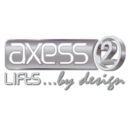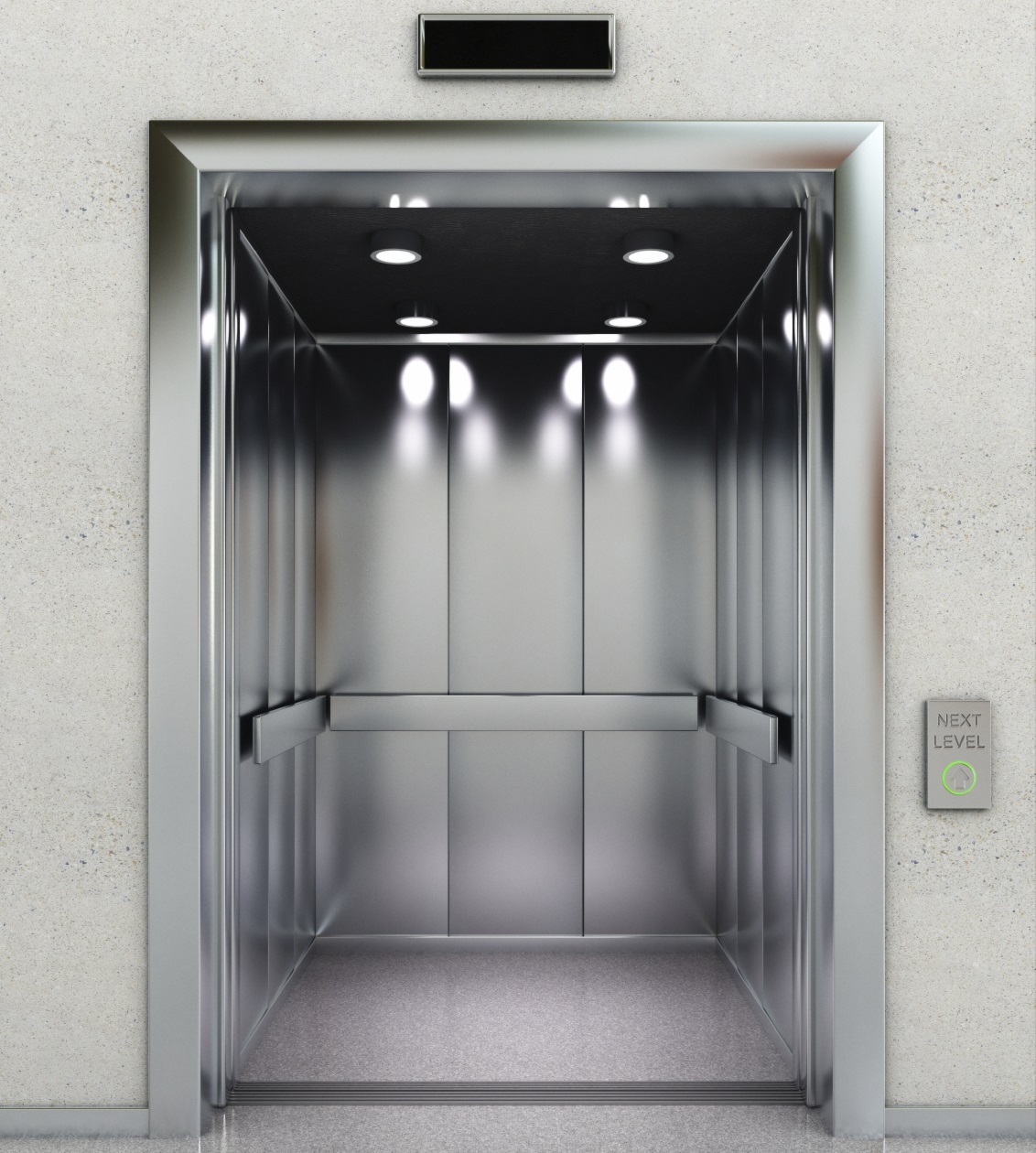Types of lift doors
Contents |
Introduction
There are many different types of doors that can be installed in lifts, all of which can be divided into manual and automatic. Manual doors are usually opened and closed manually by the user, while automatic ones are powered by a door operator. Both manual and automatic doors can be further subdivided into different categories.
Manual doors
Typically found in older buildings, these lift doors are normally operated by the user, although some close automatically. They are most common in older and small European lifts dating back to the 1950s and 1970s.
In some cases, the door can be spring-loaded, meaning the gate cannot be left open, or the gate might close automatically when the user presses the button and partially or fully open when the lift arrives at a floor.
Automatic doors
These types of lift doors are considered the standard in modern buildings. Nearly all automatic doors are powered by a door operator in the cabin and can be found in a wide variety of locations, such as retail stores, schools, hospitals, airports, and shopping centres. Automatic doors offer many different features that manual doors do not, including traffic sensors, pressure sensors, speed controls, and obstacle detection.
They can also have different types of opening. Single opening refers to a single panel door the width of the doorway that opens to the left or the right. It is popular in older buildings across North America. Centre opening doors are common in many buildings; they have two panels that meet in the middle and slide open to the side. These types of doors are highly efficient but do not allow for the full use of the door width.
Swing doors
Swing doors are commonly installed for pedestrian use. They can open and close automatically and are easily installed in residences and other similar buildings. Swing doors come in a variety of styles:
- Solid doors.
- Vision panel doors.
- Glass doors.
- Aluminium doors.
- Stainless steel doors.
- Fire rated doors.
- Eco bus folding doors.
Telescopic sliding doors
Telescopic doors are usually found in small spaces, as their opening mechanism does not require the doors to slide all the way through the side walls. The doors open and retract, requiring less interior wall space and providing a larger automatic opening than traditional lift doors. Telescoping swing doors can have different styles:
- Sliding doors.
- Central opening or panel opening.
- Stainless steel doors.
- Glass doors.
- Fire rated doors.
Eco bus folding doors
These doors are typically installed when both weight and space are limited. Eco bus folding doors do not change the weight of a lift or its cabin structure, due to their reduced dimensions and folder opening. An integrated mechanical release system is also available for swing landing doors.
Just like other types of lift doors, eco bus folding doors are present in a wide range of styles, shapes and finishes:
Bespoke
Bespoke doors are also available and can be swing, telescopic or eco bus folding doors.
Find out more
Related articles on Designing Buildings Wiki
- Considerations When Installing a Residential Lift.
- Counterweights.
- Firefighting lift.
- Landings in buildings.
- Lifting device.
- Lifting platform.
- Lift motor room.
- Lifts and Escalators: A Quality Perspective.
- Lifts and Their Special Operating Modes.
- Lifts for office buildings.
- Smart elevators.
- The importance of service lifts.
- The science of lifts.
- Wheelchair platform stairlifts.
--Nathan Massey 14:30, 11 Jul 2017 (BST)
Featured articles and news
Government consultations for the summer of 2025
A year of Labour, past and present consultations on the environment, the built environment, training and tax.
CMA competitiveness probe of major housing developers
100 million affordable housing contributions committed with further consultation published.
Homes England supports Greencore Homes
42 new build affordable sustainable homes in Oxfordshire.
Zero carbon social housing: unlocking brownfield potential
Seven ZEDpod strategies for brownfield housing success.
CIOB report; a blueprint for SDGs and the built environment
Pairing the Sustainable Development Goals with projects.
Types, tests, standards and fires relating to external cladding
Brief descriptions with an extensive list of fires for review.
Latest Build UK Building Safety Regime explainer published
Key elements in one short, now updated document.
UKGBC launch the UK Climate Resilience Roadmap
First guidance of its kind on direct climate impacts for the built environment and how it can adapt.
CLC Health, Safety and Wellbeing Strategy 2025
Launched by the Minister for Industry to look at fatalities on site, improving mental health and other issues.
One of the most impressive Victorian architects. Book review.
Common Assessment Standard now with building safety
New CAS update now includes mandatory building safety questions.
RTPI leader to become new CIOB Chief Executive Officer
Dr Victoria Hills MRTPI, FICE to take over after Caroline Gumble’s departure.
Social and affordable housing, a long term plan for delivery
The “Delivering a Decade of Renewal for Social and Affordable Housing” strategy sets out future path.
A change to adoptive architecture
Effects of global weather warming on architectural detailing, material choice and human interaction.
The proposed publicly owned and backed subsidiary of Homes England, to facilitate new homes.
How big is the problem and what can we do to mitigate the effects?
Overheating guidance and tools for building designers
A number of cool guides to help with the heat.
The UK's Modern Industrial Strategy: A 10 year plan
Previous consultation criticism, current key elements and general support with some persisting reservations.
Building Safety Regulator reforms
New roles, new staff and a new fast track service pave the way for a single construction regulator.



























Comments